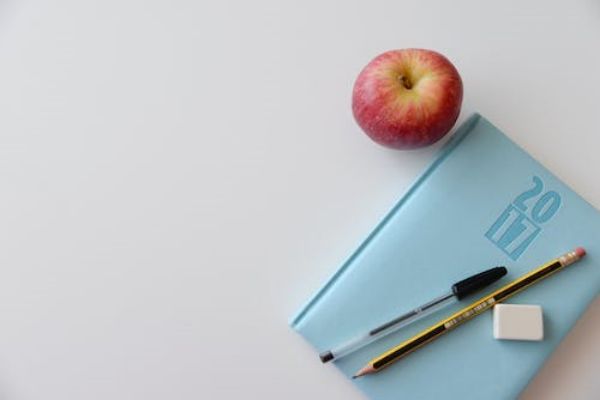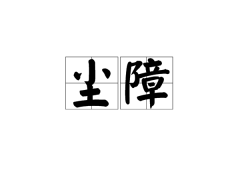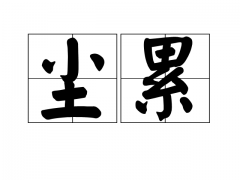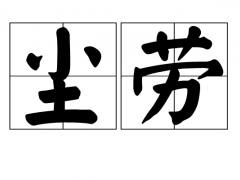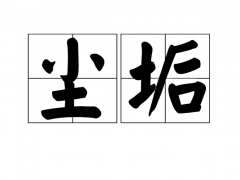初中英语语法知识归纳 篇1
一、冠词 a / an 的用法
a用于辅音音素前 a useful book, a university

an则用于元音音素前 an hour, an honest boy , an “A E F H I L M N O R S X”
二、定冠词the的用法:
1)特指双方都明白的人或物: Give me the book
2)上文提到过的人或事: ---Do you know the lady in blue –Yes, she is a teacher of a university
3)指世上独一物二的事物the sun ( sky / moon/ earth/ world/ nature/ universe )
4)单数名词连用表示一类事物,如:the dollar 美元; The lion is a wild animal或与形容词或分词连用,表示一类人:the rich /poor/ blind/ aged / living / impossible
5)用在序数词和形容词最高级,及形容词only,very, same等前面:I live on the second floor
6)用在表示身体部位的名词前: She caught me by the arm
7)用在表示乐器和表方位的名词之前: She plays the piano violin guitar in the north of China
8)用在普通名词构成专有名词前: the People's Republic of China the United States the Great Wall the Summer Palace
9) 用在姓氏的复数名词之前,表示一家人:the Greens are playing the piano
10) in the day, in the morning (afternoon,evening), in the middle (of), in the end, all the time at the same time on the whole, by the way, go to the cinema at he age of six at the beginning of the twenty-first century on the other side of at the moment the day after tomorrow the day before yesterday, the next morning, in the sky (water,field,country) in the dark, in the rain
三、不用定冠词的情况
1) 国名,人名前通常不用定冠词:China , Europe 欧洲 Lei Feng 雷锋
2)物质名词和抽象名词表示一般概念时,通常不加冠词;当表示特定的意思时,需要加定冠词Failure is the mother of success 失败乃成功之母。
3)在季节、月份、节日、 假日、日期、星期等表示时间的名词之前,不加冠词; Children’s Day Mother’s Day Father’s Day
4)在称呼或表示官衔,职位的名词前不加冠词; He is captain of the team
5)在三餐、四季,球类运动、学科、娱乐运动的名称前,不加冠词 如:have breakfast /supper / lunch,play basketball / football / volleyball / chess , in spring/summer/ autumn/ winter
初中英语语法知识归纳 篇21 被动语态的基本时态变化
被动语态通常为十种时态的被动形式, 被动语态由be+过去分词构成,be随时态的变化而变化。以do为例,各种时态的被动语态形式为:
1) am/is/are +done (过去分词) 一般现在时
例:Visitors are requested not to touch the exhibits
2) has /have been done 现在完成时
例:All the preparations for the task have been completed, and we're ready to start
3) am/is /are being done 现在进行时
例:A new cinema is being built here
4) was/were done 一般过去时
例:I was given ten minutes to decide whether I should reject the offer
5) had been done 过去完成时
例: By the end of last year, another new gymnasium had been completed in Beijing
6) was/were being done 过去进行时
例:A meeting was being held when I was there
7) shall/will be done 一般将来时
例:Hundreds of jobs will be lost if the factory closes
8) should/would be done 过去将来时
例:The news would be sent to the soldier's mother as soon as it arrived
9) shall/will have been done 将来完成时(少用)
例:The project will have been completed before July
2 被动语态的特殊结构形式
1)带情态动词的被动结构。其形式为:情态动词+be+过去分词。
例:The baby should be taken good care of by the baby-sitter
2) 有些动词可以有两个宾语,在用于被动结构时,可以把主动结构中的一个宾语变为主语,另一宾语仍然保留在谓语后面。通常变为主语的是间接宾语。
例:His mother gave him a present for his birthday 可改为 He was given a present by his mother for his birthday
3) 当“动词+宾语+宾语补足语”结构变为被动语态时,将宾语变为被动结构中的主语,其余不动。
例:Someone caught the boy smoking a cigarette 可改为The boy was caught smoking a cigarette
4)在使役动词have, make, get以及感官动词see, watch, notice, hear, feel, observe等后面不定式作宾语补语时,在主动结构中不定式to要省略,但变为被动结构时,要加to。
例:Someone saw a stranger walk into the building 可改为A stranger was seen to walk into the building
5) 有些相当于及物动词的动词词组,如“动词+介词”,“动词+副词”等,也可以用于被动结构,但要把它们看作一个整体,不能分开。其中的介词或副词也不能省略。
例The meeting is to be put off till Friday
初中英语语法知识归纳 篇31)will/shall+动词原形 shall用于第一人称,常被will 所代替。will 在陈述句中用于各人称,在征求意见时常用于第二人称。will not=won't shall not=shan't例如:
Which paragraph shall I read first 我先读哪一段呢
Will you be at home at seven this evening 今晚七点回家好吗
2) be going to +不定式,表示将来。
a 主语的意图,即将做某事。例如:What are you going to do tomorrow 明天打算作什么呢
b 计划,安排要发生的事。例如:The play is going to be produced next month。这出戏下月开播。
c 有迹象要发生的事。例如:Look at the dark clouds, there is going to be a storm 看那乌云,快要下雨了。
3) be +不定式表将来,按计划或正式安排将发生的事。例如:
We are to discuss the report next Saturday我们下星期六讨论这份报告。
4) be about to +不定式,意为马上做某事。例如:
He is about to leave for Beijing 他马上要去北京。
注意:be about to do 不能与tomorrow, next week 等表示明确将来时的时间状语连用。
Notice:be to和be going to
be to 表示客观安排或受人指示而做某事,be going to 表示主观的打算或计划。例如:
I am to play football tomorrow afternoon 明天下午我去踢球。(客观安排)
I'm going to play football tomorrow afternoon 明天下午我想去踢球。(主观安排)
5)现在进行时表将来时
下列动词的现在进行时表示将来时
gocomeflyleavestartbeginfinishendarrive and so on
she is leaving for Wuhan tomorrow
6)一般现在时表将来
1)下列动词come, go, arrive, leave, start, begin, return的一般现在时可以表示将来,主要用来表示在时间上已确定或安排好的事情。例如:
The train leaves at six tomorrow morning 火车明天上午六点开。
When does the bus star It stars in ten minutes 汽车什么时候开十分钟后。
2)以here, there等开始的倒装句,表示动作正在进行。
初中英语语法知识归纳 篇4构词法 :
英语构词法主要有:合成法、派生法和转换法。
1、合成法:如:spaceship, headache, basketball, playground等等。
2、派生法:(1)派生名词:①动词+er/or ②动词+ing ③动词+(t)ion ④形容词+ness ⑤其他,如:inventor, learner, swimming, congratulation, kindness, carelessness, knowledge
(2)派生形容词:①名词+y ②名词+ful ③动词+ing/ed ④friendly ⑤dangerous ⑥Chinese; Japanese ⑦English ⑧French ⑨German ⑩国名+(i)an 如:snowy, sunny, hopeful, beautiful, interesting, following, daily(每日的),nervous, delicious
(3)派生副词:①形容词+ly ②其它,如:slowly, angrily, full→fully, good→well, possible→possibly
3、转换法:
(1)形容词→动词,如:dry(干燥的)→dry(弄干), clean(干净的)→clean(打扫,弄干净),等等。
(2)动词→名词,如:look, walk, rest, work, study, swim, go, talk等等。
(3)名词→动词,如:hand(手)→(传递),face(脸)→(面对)等等。
(4)形容词→副词,如:early→early, fast→fast等等。
(5)副词→连词,如:when(什么时候)→(当……时候),等等。
(6)介词→副词,如:in(到……里)→(在里面;在家),on(在…上)→(进行,继续)
名词:
1、英语名词可分专有名词和普通名词两大类:
1、专有名词是个别的人、地、物、团体、机构等的专用名称。
专有名词如果是含有普通名词的短语,则必须使用定冠词the。如:the Great Wall(长城)
姓氏名如果采用复数形式,则表示该姓氏一家人(复数含义),如:the Greens( 格林一家人)。
2、普通名词又分为可数名词和不可数名词。
2、英语可数名词的单复数:英语可数名词有单数和复数两种形式。
1hero→heroes, photo→photos, piano→pianos
不可数名词一般没有复数形式,说明其数量时,要用有关计量名词。一盒牛奶:
3、名词所有格:
1、 名词所有格如:Childern’s Day(儿童节), my sister’s book(我姐姐的书)

(2)以s或es结尾的复数名词。只在词尾加’。如:Teachers’ Day(教师节)
(3)有些表示时间、距离以及世界、国家、城镇等无生命的名词,也可在词尾加’s 如:
today’s newspaper(今天的报纸), ten minutes’ break(十分钟的课间休息),
(4)无论表示有生命还是无生命的东西的名词,一般均可用介词of短语来表示所有关系。如:
2、[注解]:
① ‘s还可以表示某人的家或者某个店铺,如:my aunt’s(我阿姨家), the doctor’s(诊所)
② 两人共有某物时,可以采用 A and B’s 的形式,如:Lucy and Lily’s bedroom(露西和丽丽合住的卧室)
③ “of+名词所有格/名词性物主代词”,称为双重所有格,如:a friend of my father’s(我父亲的一位朋友), a friend of mine(我的一位朋友)
4、名词或代词作主语时和谓语之间的单复数的一致问题:
1、谓语和谓语基本保持单复数的一致,即:主语是可数名词单数或不可数名词时,谓语动词用单数形式:如:The computer was a great invention(计算机是个了不起的发明)The water in the glass is very cold(玻璃杯里的水很冷)
2、集体名词(如family, class, team, group, row, police, school等)做句子主语时,
① 如果表示整体概念,则谓语用单数形式,如:Class Three is a very good class(三班是好班)
② 如果表示其中的所有成员时,则谓语用复数形式,如:Class Three have a map of China(三班有张中国地图)
3、Chinese, Japanese, fish, sheep, people等表示单个时谓语用单数,表示许多时,谓语用复数。如:There is a sheep in the yard(院子里有只绵羊) / There are some sheep in the yard(院子里有一些绵羊)
4、maths, news等虽然有s结尾,但不是复数,因此谓语仍用单数:The news is very exciting (这个消息令人兴奋)
5、glasses, shoes, socks, trousers, gloves等名词往往用复数形式,故谓语用复数。如:
The trousers are very cheap and I want to take them(裤子很便宜,我想买)
6、a lot of 后跟名词复数时谓语用复数形式,跟不可数名词时谓语用单数形式。如:A lot of students are playing baseball now(现在有许多学生在打垒球) A lot of time was wasted on that work(大量的时间花在了那个工作上)(被动句)
7、and 连接两个名词做主语时,谓语原则上用复数,但是两个名词若构成一个整体事物时,谓语则用单数。如:The teacher and his son are picking apples now(老师和他的儿子在摘苹果) / Fish and chips is very famous food (鱼和薯条是一种出名的食品)
8、 there be 句型中be的单复数一般由靠近的名词决定。如:There is a table and four chairs in the room(房间里有一张桌子和四张椅子)
9、用both…and…连接两个事物做主语时,谓语一般用复数。如:Both you and I are required to be here tomorrow(你和我明天要求都来)
10、主语中含有with的短语时,谓语单复数由with之前的人物决定。如:A woman with a 7-year-old child was standing at the side of the road (一名妇女带着一个七岁的'孩子(当时)就站在路边)
11、either…or…或者 neither…nor…连接两个人物做句子主语时,谓语采用就近原则。如:Either you or he is right(要么是你对,要么是他对。/你和他有一个人是对的) / Neither you nor I am going there(你和我都不打算去那里)
12、表示一段时间或长度概念的复数名词做主语时,谓语一般用单数。如:Two months is not a short time(两个月不是个短时间)Two thousand kilometers is quite a long distance(距离)(两千千米是相当长的一段距离)
13、主语中含有half of… / (three quarters)of… / all (of) the …等词语时,谓语的单复数由名词确定,如:Over three quarters of the information on the Internet is in English / A third of the students were playing near the lake(学生的三分之一(当时)正在湖边玩耍) / All of the water in these rivers has been polluted(这些河流中的水已经被污染了)(被动句)
但是,population一词又有特殊情况: What’s the population of China(中国人口是多少)(句子用单数) / Three quarters of the population in this city are Arabs(阿拉伯人)(这个城市四分之三的人口是阿拉伯人)(句子用复数)
5、部分名词用法辨析:
1、sport、game、match、race 的区别:sport通常指“户外运动”,以锻炼为主,概念较大;game意思是“运动、比赛”,不管户内户外还是脑力体力,指以胜负为主的运动;match意为“竞赛、比赛”,多指正式比赛;race主要表示“赛跑、赛马、赛车”。如:People all around the world enjoy sports(全世界的人都喜爱运动) / The 2008 Olympic Games will be held in Beijing(2008奥运会将在北京举行)(被动句) / Our school football team won the league match(联赛)(我们学校足球队取得了联赛冠军) / They were strong and won the boat race(汤他们很棒,赢得了划艇比赛)
2、festival、holiday、vacation的区别:festival“节日”,指喜庆的日子或持续一段时间的文娱活动;holiday(假日、休息日),指法定假日或风俗习惯,复数可以表示一个较长的假期;vacation“假期”,指学习或工作中一段长时间的休息。如:The Shanghai Television Festival will be held next month(上海电视节将在下个月举行) / Sunday is a holiday and most people do not work(星期天是个假日,多数人不工作) / What are you going to do during the summer vacation/holidays(在暑期你打算做什么事情)
3、journey、tour、trip、travel的区别:journey指在陆地上(或海上或空中)进行的长途旅行,不知终点,含有辛苦的意思;tour指途中作短期逗留的巡回旅行,强调游览多处,常用来指观光等;trip通常指往返定时的短途旅行,如出差度假等;travel多指长期或长途的观光旅行,尤其指到国外,没有明确目的地,也作不可数名词,指旅行这一行为。如:He made up his mind to make the journey to Dunhuang(他拿定主意要去敦煌旅行)/ He has gone on a walking tour(他步行观光去了) / He took several trips to Shanghai last yeaar(去年他去了上海好几次) / Did you go to Santiago(圣地亚哥) during your travels(旅行期间你去圣地亚哥了吗) / Travelling through thick forests is dangerous(在密林里边穿行是很危险的)
4、sound、noise、voice的区别:sound指各种声音;noise主要指“噪音”;voice指人的“嗓音”。如:The noise of the street kept me awake in the night(街上的喧嚣声让我彻夜难眠) / All of a sudden there was the sound of shots and a cry(突然间传来几声枪响和一声尖叫) / The singer has lost her ringing voice as a result of a bad cold(因为感冒的缘故,这个歌唱家失去了她银铃般的嗓音)
5、fish的问题:指许多条鱼且不管种类时,用fish,单复数相同;fishes 指许多种类的鱼;fish指“鱼肉”时是不可数名词。如:There are many kinds of fishes in the pool (池子里有很多种类的鱼)/ I prefer fish to meat(与肉相比我更喜欢鱼)
代词:
1、代词的分类:英语中代词分为:人称代词、物主代词、反身代词、指示代词、关系代词、疑问代词、连接代词和不定代词等等。
2、人称代词:人称代词代替人和事物的名称,分为主格和宾格两种形式。
初中英语语法汇总
11 动词的时态
111 一般现在时的用法
1) 经常性或习惯性的动作,常与表示频腮度的时间状语连用。时间状语: every…, sometimes, at…, on Sunday。例如:
I leave home for school at 7 every morning 每天早上我七点离开家。
2) 客观真理,客观存在,科学事实。例如:
The earth moves around the sun 地球绕太阳转动。
Shanghai lies in the east of China 上海位于中国东部。
3) 表示格言或警句。例如:
Pride goes before a fall 骄者必败。
注意:此用法如果出现在宾语从句中,即使主句是过去时,从句谓语也要用一般现在时。
例:Columbus proved that the earth is round 哥伦布证实了地球是圆的。
4) 现在时刻的状态、能力、性格、个性。例如:
I don't want so much 我不要那么多。
Ann writes good English but does not speak well 安英语写得不错,讲的可不行。
比较:Now I put the sugar in the cup 把糖放入杯子。
I am doing my homework now 我正在做功课。
第一句用一般现在时,用于操作演示或指导说明的示范性动作,表示言行的瞬间动作。第二句中的now是进行时的标志,表示正在进行的动作的客观状况,所以后句用一般现在时。
返回动词的时态目录
112 一般过去时的用法
1)在确定的过去时间里所发生的动作或存在的状态。例如:时间状语有:yesterday, last week, an hour ago, the other day, in 1982等。例如:
Where did you go just now 刚才你上哪儿去了?
2)表示在过去一段时间内,经常性或习惯性的动作。例如:
When I was a child, I often played football in the street 我是个孩子的时候,常在马路上踢足球。
Whenever the Browns went during their visit, they were given a warm welcome
那时,布朗一家无论什么时候去,都受到热烈欢迎。
3)句型:It is time for sb to do sth "到……时间了" "该……了"。例如:It is time for you to go to bed 你该睡觉了。
It is time that sb did sth "时间已迟了" "早该……了" ,例如It is time you went to bed 你早该睡觉了。
would (had) rather sb did sth 表示'宁愿某人做某事'。例如:I'd rather you came tomorrow还是明天来吧。
4) wish, wonder, think, hope 等用过去时,作试探性的询问、请求、建议等,而一般过去时表示的动作或状态都已成为过去,现已不复存在。例如:I thought you might have some 我以为你想要一些。
比较:Christine was an invalid all her life(含义:她已不在人间。)
Christine has been an invalid all her life(含义:她现在还活着)
Mrs Darby lived in Kentucky for seven years (含义:达比太太已不再住在肯塔基州。)
Mrs Darby has lived in Kentucky for seven years (含义:现在还住在肯塔基州,有可能指刚离去)
注意: 用过去时表示现在,表示委婉语气。
1)动词want, hope, wonder, think, intend 等。例如:
Did you want anything else 您还要些什么吗?
I wondered if you could help me 能不能帮我一下。
2)情态动词 could, would。例如:
Could you lend me your bike 你的自行车,能借用一些吗?
返回动词的时态目录
113 used to / be used to
used to + do:"过去常常"表示过去习惯性的动作或状态,但如今已不存在。例如:
Mother used not to be so forgetful 老妈过去没那么健忘。
Scarf used to take a walk 斯卡夫过去常常散步。
be used to + doing: 对……已感到习惯,或"习惯于",to是介词,后需加名词或动名词。例如:
He is used to a vegetarian diet
Scarf is used to taking a walk 斯卡夫现在已习惯于散步了。
典型例题
---- Your phone number again I ___ quite catch it
---- It's 69568442
A didn't B couldn't C don't D can't
答案A 本句虽没有明确的时间状语,但从语意上看出,在听的时候没有听懂这个动作发生在过去,因此应用过去时。
返回动词的时态目录
114 一般将来时
1) shall用于第一人称,常被will 所代替。will 在陈述句中用于各人称,在征求意见时常用于第二人称。例如:
Which paragraph shall I read first? 我先读哪一段呢?
Will you be at home at seven this evening 今晚七点回家好吗?
2) be going to +不定式,表示将来。
a 主语的意图,即将做某事。例如:What are you going to do tomorrow 明天打算作什么呢?
b 计划,安排要发生的事。例如:The play is going to be produced next month。这出戏下月开播。
c 有迹象要发生的事。例如:Look at the dark clouds, there is going to be a storm 看那乌云,快要下雨了。
3) be +不定式表将来,按计划或正式安排将发生的事。例如:
We are to discuss the report next Saturday我们下星期六讨论这份报告。
4) be about to +不定式,意为马上做某事。例如:
He is about to leave for Beijing 他马上要去北京。
注意:be about to do 不能与tomorrow, next week 等表示明确将来时的时间状语连用。
返回动词的时态目录
115 be going to / will 用于条件句时,be going to表将来,will表意愿。例如:
If you are going to make a journey, you'd better get ready for it as soon as possible
Now if you will take off your clothes, we will fit the new clothes on you in front of the mirror
返回动词的时态目录
116 be to和be going to
be to 表示客观安排或受人指示而做某事,be going to 表示主观的打算或计划。例如:
I am to play football tomorrow afternoon 明天下午我去踢球。(客观安排)
I'm going to play football tomorrow afternoon 明天下午我想去踢球。(主观安排)
返回动词的时态目录
117 一般现在时表将来
1)下列动词come, go, arrive, leave, start, begin, return的一般现在时可以表示将来,主要用来表示在时间上已确定或安排好的事情。例如:
The train leaves at six tomorrow morning 火车明天上午六点开。
When does the bus star It stars in ten minutes 汽车什么时候开?十分钟后。
2)以here, there等开始的倒装句,表示动作正在进行。例如:
Here comes the bus = The bus is coming 车来了。
There goes the bell = The bell is ringing 铃响了。
3)在时间或条件句中。例如:
When Bill comes (不是will come), ask him to wait for me 比尔来后,让他等我。
I'll write to you as soon as I arrive there 我到了那里,就写信给你。
4)在动词hope, take care that, make sure that等的宾语从句中。例如:
I hope they have a nice time next week 我希望他们下星期玩得开心。
Make sure that the windows are closed before you leave the room 离开房间前,务必把窗户关了。
返回动词的时态目录
118 用现在进行时表示将来
下列动词come, go, arrive, leave, start, begin, return等现在进行时可以表示将来。例如:
I'm leaving tomorrow 明天我要走了。
Are you staying here till next week 你会在这儿呆到下周吗?
返回动词的时态目录
119 现在完成时
现在完成时用来表示之前已发生或完成的动作或状态,其结果的影响现在还存在;也可表示持续到现在的动作或状态。其构成:have (has) +过去分词。
返回动词的时态目录
1110 比较一般过去时与现在完成时
1)一般过去时表示过去某时发生的动作或单纯叙述过去的事情,强调动作;现在完成时为过去发生的,强调过去的事情对现在的影响,强调的是影响。
2)一般过去时常与具体的时间状语连用,而现在完成时通常与模糊的时间状语连用,或无时间状语。
一般过去时的时间状语:yesterday, last week,…ago, in1980, in October, just now等,皆为具体的时间状语。
现在完成时的时间状语:for, since, so far, ever, never, just, yet, till/until, up to now, in past years, always等,皆不确定的时间状语。
共同的时间状语:this morning, tonight, this April, now, already, recently, lately 等。
3)现在完成时可表示持续到现在的动作或状态,动词一般是延续性的,如live, teach, learn, work, study, know。
一般过去时常用的非持续性动词有come, go, leave, start, die, finish, become, get married等。例如:
I saw this film yesterday (强调看的动作发生过了)
I have seen this film (强调对现在的影响,**的内容已经知道了)
Why did you get up so early (强调起床的动作已发生过了)
Who hasn't handed in his paper (强调有卷子未交,疑为不公平竞争)
He has been in the League for three years (在团内的状态可延续)
He has been a League member for three years (是团员的状态可持续)
句子中如有过去时的时间副词(如yesterday, last, week, in 1960)时,不能使用现在完成时,要用过去时。
(错)Tom has written a letter to his parents last night
(对)Tom wrote a letter to his parents last night
返回动词的时态目录
1111 用于现在完成时的句型
1)It is the first / second time that…结构中的从句部分,用现在完成时。例如:
It is the first time that I have visited the city 这是我第一次访问这城市。
This is the first time (that) I've heard him sing 这是我第一次听他唱歌。
注意:It was the third time that the boy had been late
2)This is +形容词最高级+that…结构,that 从句要用现在完成时。例如:
This is the best film that I've (ever) seen 这是我看过的最好的**。
典型例题
(1) ---Do you know our town at all
---No, this is the first time I ___ here
A was B have been C came D am coming
答案B This is the first time 后面所加从句应为现在完成时,故选B。
(2) ---Have you ____ been to our town before
---No, it's the first time I ___ here
A even, come B even, have come C ever, come D ever, have come
答案D ever意为曾经或无论何时,反意词为never,此两词常用于完成时。
注意:非延续性动词的否定形式可以与表示延续时间的状语连用。即动作不发生的状态是可以持续的。
(错)I have received his letter for a month
(对)I haven't received his letter for almost a month
返回动词的时态目录
1112 比较since和for
Since 用来说明动作起始时间,for用来说明动作延续时间长度。例如:
I have lived here for more than twenty years我住在这儿二十多年了。
I have lived here since I was born 我从出生起就住在这儿了。
注意:并非有for 作为时间状语的句子都用现在完成时。
I worked here for more than twenty years (我现在已不在这里工作。)
I have worked here for many years(现在我仍在这里工作。)
注意:用句型转换的方法,很容易排除非延续动词在有for/since结构的完成时中的误用。
1)(对) Tom has studied Russian for three years = Tom began to study Russian three years ago, and is still studying it now
2)(错) Harry has got married for six years = Harry began to get married six years ago, and is still getting married now
显然,第二句不对,它应改为 Harry got married six years ago 或 Harry has been married for six years
返回动词的时态目录
1113 since的四种用法
1) since +过去一个时间点(如具体的年、月、日期、钟点、1980, last month, half past six)。例如:
I have been here since 1989 1989起,我一直在这儿。
2) since +一段时间+ ago。例如:
I have been here since five months ago 我在这儿,已经有五个月了。
3) since +从句。例如:
Great changes have taken place since you left 你走后,变化可大了。
Great changes have taken place since we were here 我们走后,变化可大了。
4) It is +一段时间+ since从句。例如:
It is two years since I became a postgraduate student 我考上研究生有两年了。
返回动词的时态目录
1114 延续动词与瞬间动词
1) 用于完成时的区别
延续动词表示经验、经历; 瞬间动词表示行为的结果,不能与表示段的时间状语连用。例如:
He has completed the work 他已完成了那项工作。 (表结果)
I've known him since then 我从那时起就认识他了。(表经历)
2) 用于till / until从句的差异
延续动词用于肯定句,表示"做……直到……" 瞬间动词用于否定句,表示"到……,才……"。例如:
He didn't come back until ten o'clock 他到10 点才回来。
He slept until ten o'clock 他一直睡到10点。
典型例题
1 You don't need to describe her I ___ her several times
A had met B have met C met D meet
答案B 首先本题后句强调对现在的影响,我知道她的模样,你不用描述。再次,several times告知为反复发生的动作,因此用现在完成时。
2 ---I'm sorry to keep you waiting
---Oh, not at all I ___ here only a few minutes
A have been B had been C was D will be
答案A 等待的动作由过去开始,持续到现在,应用现在完成时。
返回动词的时态目录
1115 过去完成时
1) 概念:表示过去的过去
----|----------|--------|----> 其构成是had +过去分词构成。
那时以前 那时 现在
2) 用法
a 在told, said, knew, heard, thought等动词后的宾语从句。例如:
She said (that)she had never been to Paris 她告诉我她曾去过巴黎。
b 状语从句
在过去不同时间发生的两个动作中,发生在先,用过去完成时;发生在后,用一般过去时。例如:
When the police arrived, the thieves had run away 警察到达时,小偷们早就跑了。
c 表示意向的动词,如hope, wish, expect, think, intend, mean, suppose等,用过去完成时表示"原本…,未能…"。例如:
We had hoped that you would come, but you didn't 那时我们希望你能来,但是你没有来。
3) 过去完成时的时间状语before, by, until , when, after, once, as soon as。例如:
He said that he had learned some English before 他说过他以前学过一些英语。
By the time he was twelve, Edison had began to make a living by himself 到了十二岁那年,爱迪生开始自己谋生。
Tom was disappointed that most of the guests had left when he arrived at the party
汤姆失望了,因为他到达晚会时,大部分客人已经走了。
典型例题
The students ___ busily when Miss Brown went to get a book she ___ in the office
A had written, left B,were writing, has left C had written, had left D were writing, had left
答案D "把书忘在办公室"发生在"去取书"这一过去的动作之前,因此"忘了书"这一动作发生在过去的过去,用过去完成时。句中when表示的是时间的一点,表示在"同学们正忙于……"这一背景下,when所引导的动作发生。因此前一句应用过去进行时。
注意: had hardly… when 还没等…… 就……。例如:
I had hardly opened the door when I he hit me 我刚打开门,他就打了我。
had no sooner…than 刚…… 就……。例如:
He had no sooner bought the car than he sold it 他刚买了这辆车,转眼又卖了。
返回动词的时态目录
1116 用一般过去时代替过去完成时
1) 两个动作如按顺序发生,又不强调先后,或用then,and,but 等连词时,多用一般过去时。例如:
When she saw the mouse,she screamed 她看到老鼠,就叫了起来。
My aunt gave me a hat and I lost it 姑妈给了我一顶帽子,我把它丢了。
2 ) 两个动作相继发生,可用一般过去时;如第一个动作需要若干时间完成,用过去完成时。例如:
When I heard the news, I was very excited
3) 叙述历史事实,可不用过去完成时,而只用一般过去时。例如:
Our teacher told us that Columbus discovered America in 1492
返回动词的时态目录
1117 将来完成时
1) 构成will have done
2) 概念
a 状态完成:表示某事继续到将来某一时为止一直有的状态。例如:
They will have been married for 20 years by then 到那时他们结婚将有二十年了。
b 动作完成:表示将来某一时或另一个将来的动作之前,已经完成的动作或获得的经验。例如:
You will have reached Shanghai by this time tomorrow 明天此时,你已经到达上海了。
返回动词的时态目录
1118 现在进行时
现在进行时的基本用法:
a 表示现在(指说话人说话时)正在发生的事情。例如:
We are waiting for you 我们正在等你。
b 习惯进行:表示长期的或重复性的动作,说话时动作未必正在进行。例如:
Mr Green is writing another novel 他在写另一部小说。(说话时并未在写,只处于写作的状态。)
c 表示渐变,这样的动词有:get, grow, become, turn, run, go, begin等。例如:
The leaves are turning red 叶子在变红。
It's getting warmer and warmer 天越来越热了。
d 与always, constantly, forever 等词连用,表示反复发生的动作或持续存在的状态,往往带有说话人的主观色彩。例如:
You are always changing your mind 你老是改变主意。
典型例题
My dictionary ___, I have looked for it everywhere but still___ it
A has lost, don't find B is missing, don't find C has lost, haven't found D is missing, haven't found
答案D 前句是一个仍在持续的状态,应用进行时,由于没有找到,其影响仍然存在,应用完成时,瞬间动词用于否定式时可用于完成时。
返回动词的时态目录
1119 不用进行时的动词
1)表示事实状态的动词,如have, belong, possess, cost, owe, exist, include, contain, matter, weigh, measure, continue等。例如:I have two brothers 我有两兄弟。
This house belongs to my sister 这房子是我姐的。
2)表示心理状态的动词,如know, realize, think see, believe, suppose, imagine, agree, recognize, remember, want, need, forget, prefer, mean, understand, love, hate等。例如:I need your help 我需要你的帮助。
He loves her very much 他爱她很深。
3)瞬间动词,如accept, receive, complete, finish, give, allow, decide, refuse等。例如:
I accept your advice 我接受你的劝告。
4)系动词,如seem, remain, lie, see, hear, smell, feel, taste, get, become, turn等。例如:
You seem a little tired 你看上去有点累。
返回动词的时态目录
1120 过去进行时
1)概念:表示过去某时正在进行的状态或动作。
2)过去进行时的主要用法是描述一件事发生的背景;一个长动作延续的时候,另一个短动作发生。
3) 常用的时间状语有this morning, the whole morning, all day yesterday, from nine to ten last evening, when, while等。例如:
My brother fell while he was riding his bicycle and hurt himself 我兄弟骑车时摔了下来,受了伤。
It was raining when they left the station 他们离开车站时,正下着雨。
When I got to the top of the mountain, the sun was shining 我到达山顶时,阳光灿烂。
典型例题
1) Mary ___ a dress when she cut her finger
A made B is making C was making D makes
答案C 割伤手指是已发生的事情,应用过去时。同时,when表时间的同时性,"玛丽在做衣服时"提供事情发生的背景,因此用过去进行时。
2) As she ___ the newspaper, Granny ___ asleep
A read;was falling B was reading; fell C was reading; was falling D read;fell
答案B句中的as = when, while,意为"当……之时"。描述一件事发生的背景时,用过去进行;一个长动作发生的时候,另一个短动作发生。句意为 "在她看报纸时,奶奶睡着了。"句中的 fell(fall的过去时),是系动词,后跟形容词,如:fall sick。
初中所有英语语法
初中语法汇总:8种时态、3种从句、2种语态。
一、八种时态:
1一般现在时
表示平时经常的、习惯性的动作,描述平时所处的状态,表达平时存在的特征、有规律的状态等。
I drink water every day 我每天都喝水。(习惯性动作)
2现在进行时
表示正在发生的动作。经常用到的结构有be doing sth 常和now, look, listen这些词连用。
She is dancing 她正在跳舞。
3一般过去时
由谓语动词的过去式表示,也就是说动词词末要加-ed(除不规则动词外)。常和一般过去时连用的过去时间状语有:last night (week ,month , year , century , etc) , yesterday ,yesterday morning (afternoon , evening) , in 1999 , two hours ago等等。
4一般将来时
表示将来要发生的动作或计划。结构有主语+will+动词原形和主语+be going to do。
I will go to the zoo in this weekend 这个周末我将要去动物园。
5现在完成时
表示过去已经完成的动作对现在造成影响或后果。
I have watched that movie 我已经看过那部**了。
6过去进行时
表示过去某个时刻或时间段正在进行的事情或动作。结构是was/were+现在分词。
What was he doing at home last night 昨天晚上他在家干什么?
7过去将来时
表示过去的某时以后将要发生的动作。
He didn't expect that we would all be there 他没料到我们会全在那儿。
8过去完成时
表示在过去某一时间或动作之前已经发生或完成了的动作,也就是“过去的过去”。主要结构是助动词 had +过去分词,had 通用于各种人称。
She had finished writing the report by 9:00 this morning 今天早晨9点之前,她已经写完了报告。
二、三种从句
1宾语从句
在复合句中,由一个句子充当宾语,这个句子叫做宾语从句。宾语从句主要有三种类型,分别是that引导的宾语从句、if或whether引导的宾从、连接代词和连接副词引导的宾语从句。 常见的宾语从句引导词:that、if、whether、what、who、where、why和how。
2定语从句
定语从句在中考和高考中出现的频率都非常高。在复合句中,修饰名词或代词的从句叫定语从句。被修饰的名词或代词叫先行词。定语从句一般放在先行词的后面。常见的关系代词包括that,which,who(宾格whom,所有格whose),as 等,关系副词包括where,when,why等。
3状语从句
状语从句就是由一个句子在复合句中充当状语。所以状语从句又可以分为时间状语从句、地点状语从句、原因状语从句、目的状语从句、结果状语从句等等。每种状语从句都有特定的引导词:
地点状语从句:where,wherever
时间状语从句:when, while, as, before, until, till, since
原因状语从句:because, since,as, now that, not that…, but that…, seeing that, considering that, in that
目的状语从句:so, so that, in order that, that, to the end that, in case,for fear that,lest
结果状语从句:sothat, such that, so that, with the result that
条件状语从句:if,unless,if only,only if,in case,suppose/supposing(that),provided/providing(that),on condition that,so/as long as
方式状语从句:as, as if, as though
让步状语从句:though, although, as, even if, even though, whether, no matter whetheror, no matter with
比较状语从句:asas, not as/soas, than, the morethe more
三、两种语态
在主动语态中,主语后面接人(be +动词原型),被动语态(be+动词过去分词)。在主动语态中,主语是谓语动词的使动方。在被动语态中,主语是谓语动词的受动方。学习被动语态时,不仅要知道被动语态的各种语法结构,还要知道在哪些情况中使用被动语态。
:
词法
初中英语语法有主谓一致,被动语态等。
被动语态根据时态的不同,可分为以下几种类型:
一般现在时:am、is、are+done;般过去时:was、were+done。
现在进行时:am、is、are+beingdone过去进行时:was、were+beingdone。
将来时:will、would+be done,be going to be done,be to be done
现在完成时:have、has+been done。
过去完成时:had+been done。
将来完成时:will+have been done。
主谓一致指的是句子的谓语动词与其主语在数上必须保持一致,句子的主语是第三人称单数,其谓语动词须用单数,主语是复数,则谓语动词用复数。
主谓一致的三个原则。
英语中的主谓一致主要遵循三个原则:意义一致原则、语法一致原则和就近原则。这三个原则堂堂发牛矛盾,但当发生冲突时,意义一致原则为优先考虑的原则。
怎么学习英语语法:
单词的学习和朗读课文是基础,没有单词的学习和课文的朗读是学不好语法的。也就是说语法的学习不可独立来看。
语法又分为词法和句法。词法是指具体一个词语的用法,所以词法是很多的。比如forget可以接to do,也可以接doing。语法的学习就是理解句子的成分,结构。通过句法的学习可以准确理解句子的含义。

简单句的学习要容易的多,如果遇上复合句,就要复杂的多,比如主语从句,宾语从句,同位语从句等。
语法的学习还要学习时态,比如一般过去时,一般将来时,一般现在时等都要借助时间来准确理解。
语法的学习最好借助练习题来完成,语法知识只有在运用中才能检验自己是否真的学会了。是否可以转化成自己的能力。
以上就是关于初中英语语法知识归纳全部的内容,包括:初中英语语法知识归纳、初中英语语法总结、初中英语语法汇总等相关内容解答,如果想了解更多相关内容,可以关注我们,你们的支持是我们更新的动力!











